Following Rosetta’s progress from Bern
swissinfo's Veronica DeVore was with scientists in Bern as they witnessed the first-ever landing of a robot on a comet. The scientists had led the development of the ROSINA sensor aboard the Rosetta spacecraft.
–>November 13, 15:00 – Stability amid uncertainty
More images are coming in detailing Philae’s landing yesterday. Scientists are now saying the craft touched down and bounced twice before coming to rest, perhaps travelling in open space between bounces for as much as two hours.
The good news is Philae has come to a rest on the comet. The more troubling news, say scientists, is that it isn’t properly anchored and it’s in a pretty shady spot, meaning its solar panels won’t get nearly as much power as hoped. Originally, the plan was for Philae to get six or seven hours of sun per day – now it will get just 1.5.
“We don’t know what this means for the near future,” researchers said in the latest ESA media briefing.
They also said they need to be careful about deploying instruments like the MUPUS sensors because they may thrust Philae out of position or off of the comet altogether. But they expect many of the planned instruments will be deployed (carefully) in the coming hours and days.
We at swissinfo are leaving you with the latest images of the landing site before signing off – for more updates on the weeks and months of research to come from Philae and Rosetta, keep tabs on the ESA Rosetta blog.External link

PLACEHOLDER
–>November 13, 11:00 – Good morning from Philae – first pictures from Swiss cameras
The CIVA instrument on the Philae lander – with cameras developed at CSEM in Neuchatel – has sent back the first images from the surface of the comet Chury.
More to come later at this afternoon’s ESA press conference, but here’s a taste.
PLACEHOLDER
And here’s what the seven cameras mounted on Philae look like:
PLACEHOLDER
–>November 12, 20:25 – Good night from mission control
The ESA’s final briefing for the day has ended amid some uncertainty surrounding where Philae is and whether it’s properly anchored to the comet – it may have bounced off once and then settled again in a different location, researchers have said. It’s also unknown what role, if any, the failure of the Swiss-made “Active Descent System”played in the anchoring difficulties.
And we’ll likely have to wait until tomorrow for the first images from the surface – stay tuned for those.
In the meantime, here are some photos from Rosetta’s long trip to touchdown on Chury.
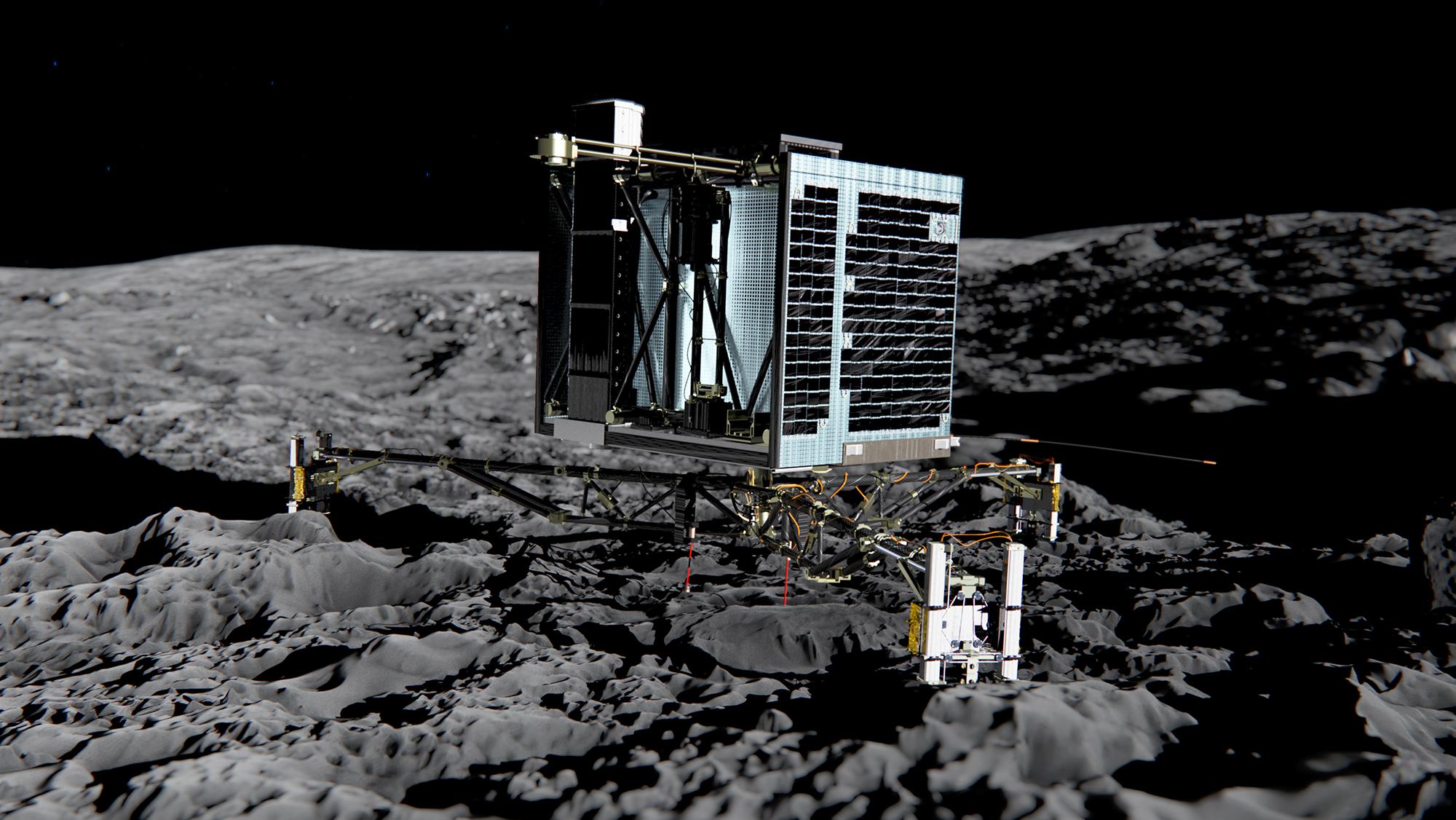
More
The trip: Unbelievable precision, astounding images
For now, data is coming in, waiting to be analysed, and the scientists involved, from Bern to Darmstadt, are out partying – or sleeping.
–>November 12, 19:30 – A strong showing for Switzerland
Swiss leaders are weighing in on Philae’s successful touchdown – Economics Minister Johann Schneider-Ammann said he was especially happy this project was realised while Switzerland has the rotating presidency of the European Space Agency.
“The success of the Rosetta mission honors numerous Swiss researchers, the University of Bern and Swiss institutions and innovative companies,” he said.
And, from Hollywood – 9,500 kilometres from Bern – another congratulatory voice chimed in.
“@ESA_RosettaExternal link: .@WilliamShatnerExternal link touchdown confirmed for away team @philae2014External link, captain!” Congratulations!
— William Shatner (@WilliamShatner) November 12, 2014External link
–>November 12, 19:00 – First images coming in
The first shots of the comet “Chury” taken on the way down by cameras aboard Philae are trickling in. Here’s one from three kilometres away.
Great shot! MT @Philae2014External link: .@ESA_RosettaExternal link See for yourself! ROLIS imaged #67PExternal link just 3km away! #CometLandingExternal link pic.twitter.com/1FwWs1tioFExternal link
— ESA Rosetta Mission (@ESA_Rosetta) November 12, 2014External link–>November 12, 18:30 CET – Misfiring harpoons
Philae is on the comet, but the team at ESA is reporting that the lander’s harpoons didn’t fire as intended.
I’m on the surface but my harpoons did not fire. My team is hard at work now trying to determine why. #CometLandingExternal link
— Philae Lander (@Philae2014) November 12, 2014External linkKarsten Seiferlin of the University of Bern (husband of Ruth Ziethe, who we spoke with earlier) checked in via video conference from Germany and suspected as much. He helped developed the MUPUS sensors aboard Philae that will hopefully tell us more about the comet’s temperature and composition.
“It’s clear from the data we see that the lander made it to the surface, but we’re getting some inconsistent and unexpected results from various instruments,” he said.
“The harpoons might not have been fired.”
–>November 12, 18:15 CET: ROSINA’s leader checks in
Kathrin Altwegg, the leader of the ROSINA mission at the University of Bern, just checked in via video conference from mission control at Darmstadt.
She’s smiling because, as she says, “everything went as planned. There was a script, Rosetta followed every step and that’s really great”.
Now, she says, she hopes the anchors stay put and that “Philae stays on the ground”.
For her, this mission is not just a win for worldwide space exploration – it’s a win for Switzerland.
“I think Switzerland’s important role in this mission speaks to the technology which can be done in Switzerland. Not every nation is able to do that, and to be in such an important position speaks for itself.”
As for the comet’s molecular activity – Altwegg says it’s currently pretty inactive, but that’s likely to change in about two months when it enters a new phase.
Here, Altwegg explains ROSINA’s mission and what Chury smells like. Hint: it’s not pretty.
–>November 12, 17:50 CET: Sensors are working…so far
Ruth Ziethe, who talked to us earlier, says she’s heard that the sensors on Philae tracking the comet’s temperature and composition “are working and sending us data”.
Tomorrow, her husband’s team will have to decide where to hammer the MUPUS fiberglass rod probe into the comet, based on images that come back.
It will take three days to re-charge the sensor batteries and the team will keep gathering data as long as the batteries keep charging. But by February or March 2015, they might simply get too cold and “die”.
–>November 12, 17:30 CET: Brought to you by solar power
The spacecraft that brought the Philae lander to the Chury comet is powered by 61 square metres of solar panels – and that’s its only power source. Dr. Carla Signorini of the European Space Agency said in Bern that this was another “first” for the mission.
“Rosetta is the first mission to leave the main asteroid belt relying only on solar cells for power,” she said.
The biggest challenge in making the cells? The lack of sunlight in deep space, and the fact that the solar cells must function at -130 degrees Celsius.
“I was crying when I saw the solar panels in action,” Signorini says.

–>November 12, 17:16 CET: Happy ending!
So many people around the world were watching the broadcast that the team gathered in Bern was afraid they might miss the big moment thanks to a “still loading” message… but things came together in the end. Philae landed on the comet, sent its signal to the European Space Agency and those gathered in Bern got to see it.

–>November 12, 16:59 CET: ‘We assume Rosetta has already landed’
Annette Jäcker of the ROSINA project at the University of Bern is currently presenting her work to a room bursting at the seams at the university.

Everyone is waiting to hear about the landing, but Jäcker “assumes Rosetta has already landed“. Why? There’s a 28 minute, 20 second delay in communications between the Philae lander and the team on Earth.
“There are many firsts for this mission,“ Jäcker says. “We are the first – after Hollywood – to show it’s possible to land on a comet.”
–>November 12, 16:50 CET: Swiss-made cameras
Ivar Kjelberg of the CSEM – Swiss Center for Electronics and Microtechnology – just wants to feel like he did his job when this is all over. He’s an engineer who helped develop the cameras aboard Philae that will capture images from six different directions as the lander descends onto the comet and starts looking around.
The prototypes for these cameras were developed in 1992 and were upgraded specifically for the Rosetta project in 1998. Their optics and mechanics are all Swiss-developed and, according to Kjelberg, “need to be able to survive radiation, extreme temperature changes and all this on little power”.
Even if the landing fails, Kjelberg hopes his cameras will be able to transmit images from near the comet for some weeks or months to come. Then, he says, “I’ll feel like I’ve done my job“.
–>November 12, 16:18 CET: ‘Our baby for 16 years’
Ruth Ziethe has been living and breathing the Rosetta project for more than a decade. She’s a researcher at the University of Bern, working on a stereo camera for a Mars landing, but her husband Karsten Seiferlin helped develop the MUPUS multi-purpose sensor that’s aboard the Philae comet lander. He also works at the University of Bern but is currently in Germany watching the landing from there. “We hoped to be together for the event, but it didn’t work out that way,” she says with a smile.

What will Ziethe and her husband be looking for ahead of the lander’s touchdown? “When the probe is deployed from the lander, the MUPUS sensors are on the harpoon anchors,” she says. “The very first measurements about the comet will come from MUPUS.”
So, they’ll first try to understand what temperature the comet is and what lies below its surface. Depending on how long the sensors’ batteries last, even more information will come in about what materials the comet is made of.
The data supplied by the MUPUS sensor in the harpoon anchors should come in right away, but whether anyone will start analysing it tonight “depends on how tired we are”, Ziethe says. “The real work will start tomorrow.”
–>November 12, 14:47 CET: Zurich, we have a problem
Bit embarrassing for Switzerland: it turns out that a Swiss company had co-built the 100kg lander’s Active Descent System, which failed to activate last night. Instead of using thrust to prevent the craft from bouncing off the comet’s surface, ESA will now rely on ice screws and a harpoon system to secure the lander. No one from Realtechnologie AG, based in canton Zurich, was available for comment.
–>November 12, 13:21 CET: From Bern to Darmstadt
Although most of the other scientists involved in the ROSINA projectExternal link are expected in Bern for this afternoon’s landing, Principal Investigators Kathrin Altwegg and Hans Balsiger are at mission control in Darmstadt, Germany, awaiting news of Philae’s touchdown there.
–>November 12, 12:07 CET: First signals from Philae
The European Space Agency has confirmed that, as expected, the Philae lander has made communications contact with Earth via Rosetta. Philae will now descend onto the comet over the course of the next five hours. Here’s what a successful landing would look like:
–>November 12, 11:39 CET: A Swiss sensor
The project to make the ROSINA sensor aboard Rosetta was led by scientists at the University of Bern. What’s ROSINA’s job? As the scientists put it:
“To determine the elemental, isotopic and molecular composition of the atmospheres and ionospheres of comets as well as the temperature and bulk velocity of the gas and ions and the homogenous and inhomogenous reactions of gas and ions in the dusty cometary atmosphere and ionosphere.”
In other words: figure out what the comet is made of. More on ROSINA in the article below.
–>Nov. 12, 10:03 CET – We have separation!
The Philae landing instrument has separated from the Rosetta orbiter and is now speeding towards the Comet 67P/Churyumov–Gerasimenko (henceforth known as “Chury”).
We’ll check back in with Philae when it sends its first signals back to Earth via Rosetta, at about noon CET.

In compliance with the JTI standards
More: SWI swissinfo.ch certified by the Journalism Trust Initiative

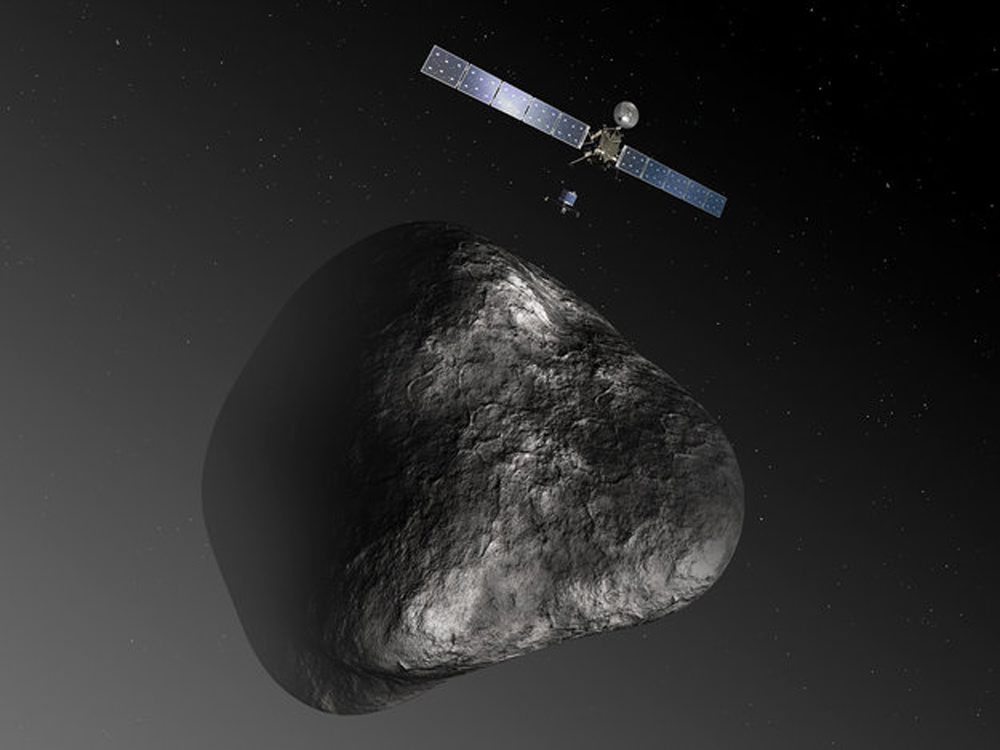
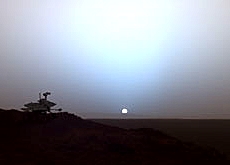
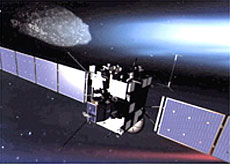
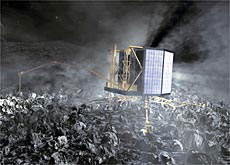
You can find an overview of ongoing debates with our journalists here. Please join us!
If you want to start a conversation about a topic raised in this article or want to report factual errors, email us at english@swissinfo.ch.